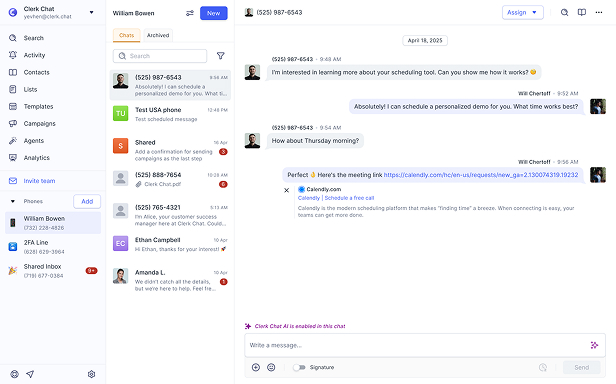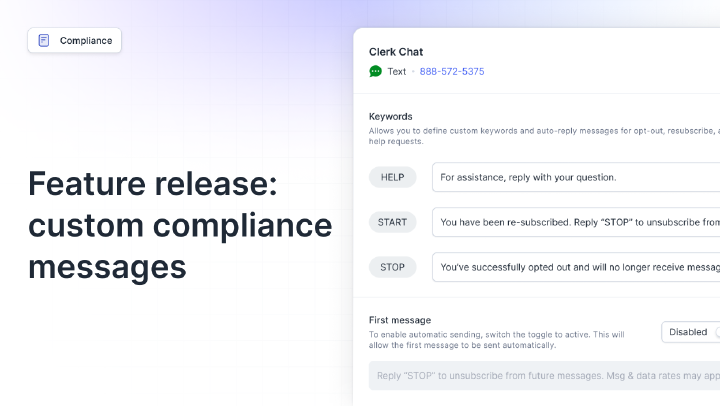OTT
[ˌoʊ ˈti ˈti]OTT, or Over-The-Top, describes services that provide content and communications directly over the internet, bypassing traditional distribution networks. In messaging, it enables apps like WhatsApp and Facebook Messenger to send texts, voice, and media without carrier involvement. This approach supports advanced features for interactive experiences.
Why OTT Matters
OTT messaging expands communication options beyond SMS limits, allowing businesses to deliver multimedia content and real-time interactions that captivate audiences.
With global app usage soaring, it reaches users on preferred platforms, driving higher engagement and satisfaction. Companies leverage OTT for personalized support, reducing response times and building loyalty through features like group chats and bots.
It also cuts costs by avoiding per-message carrier fees, enabling scalable campaigns that yield better ROI.
How OTT Works
OTT messaging relies on internet protocols to transmit data between devices via dedicated apps.
App Installation: Users download OTT apps like WhatsApp or Telegram, creating accounts linked to phone numbers or emails.
Internet Connection: Messages route through data networks (Wi-Fi or mobile data) instead of cellular SMS pathways.
Server Mediation: Apps connect to central servers that handle routing, encryption, and storage, ensuring secure delivery.
Feature Enrichment: Support for text, images, videos, voice calls, and stickers enhances communication beyond basic texts.
Notification Push: Servers send push alerts to recipients’ devices for immediate awareness.
Two-Way Interaction: Recipients respond similarly, with read receipts and typing indicators for dynamic exchanges.
Business Integration: APIs allow companies to automate sends, integrate with CRMs, and manage conversations at scale.
In business scenarios, a retailer might use OTT to send promotional videos via Messenger, tracking opens and replies for follow-ups. This bypasses carrier dependencies, offering cost-effective, feature-rich alternatives.
Best Practices with OTT
Promote App Adoption: Offer incentives like exclusive deals to encourage users to engage via OTT channels.
Leverage Rich Media: Incorporate images and videos in messages to convey information more effectively than text alone.
Secure Data Handling: Apply end-to-end encryption and comply with privacy laws to protect user information.
Segment Audiences Precisely: Group contacts by preferences to send relevant content, improving response rates.
Monitor Engagement Metrics: Analyze opens, clicks, and replies to refine strategies and content.
Provide Fallback Options: Use SMS for users without OTT apps to maintain comprehensive coverage.
Integrate with Tools: Connect OTT to analytics and automation systems for streamlined operations.
Real world examples
- Ecommerce
Sellers send order updates via OTT apps, improving satisfaction by 35%.
Read more - Healthcare
Providers share health tips through OTT, raising adherence rates by 25%.
Read more
Common misconceptions
It operates over internet connections, bypassing mobile networks for direct delivery.
It includes messaging apps providing text, voice, and media without telecom infrastructure.
Many OTT platforms use end-to-end encryption, offering stronger privacy than standard SMS.
Platforms like WhatsApp Business enable professional messaging with API integrations.
Related terms
In this article:
Ready to use your business number for text messaging?
Thousands of businesses are already experiencing the power of conversational messaging through SMS. Join us. Free trial and paid tiers available.
Get StartedFAQ
Have questions? We've got answers.
Find what you need quickly and clearly with our most frequently asked questions.
OTT stands for Over-The-Top, referring to services delivering content over the internet without traditional providers. In messaging, it uses apps like WhatsApp or Messenger for text, voice, and media. This allows rich interactions with high open rates, supporting features like read receipts and multimedia, independent of carrier networks.
Select compatible apps with business APIs, such as WhatsApp Business. Obtain approvals, integrate with CRMs, and set up flows for notifications or support. Test for reliability. Platforms like Clerk Chat complement OTT by handling SMS alongside, ensuring fallback options for broader reach.
Many OTT services are free for basics, with business tiers at $0.005-0.02 per message. Requirements include internet access and API development time (days). Savings arise from reduced SMS fees, with ROI from better engagement, often 2x higher than traditional methods.
OTT offers multimedia and encryption over internet, unlike SMS's text-only carrier dependency. RCS adds rich features to SMS but needs carrier support. OTT reaches app users globally without fees, though SMS ensures universality. Choose based on audience preferences for optimal delivery.
Follow GDPR for data consent and TCPA equivalents where applicable. Platforms mandate opt-ins and privacy policies. In the US, align with carrier rules if hybrid. Secure data transmission to prevent breaches, with fines for violations reaching thousands per incident.
Encourage app adoption with incentives. Use rich media for engaging content. Segment users for targeted sends. Track metrics like delivery and responses. Provide quick support channels. Combine with SMS for redundancy, maximizing reach and interaction quality.




